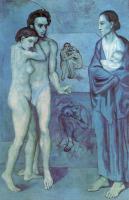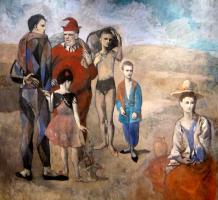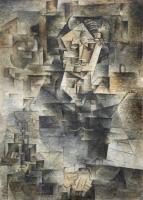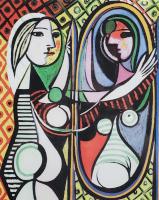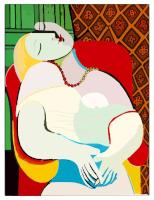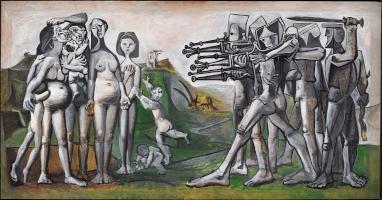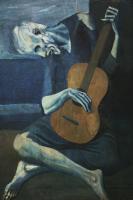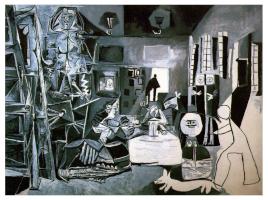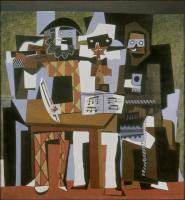Pablo Picasso
The Spanish artist Pablo Picasso was probably the greatest artistic genius of the twentieth century. He was first taught by his father, and showed exceptional talent at an early age. He exhibited and won awards when still a boy, and went on to study at the academies of Barcelona and Madrid. In 1900 he visited Paris, and by 1904 had settled in France, where he spent the rest of his life.
His early work is much concerned with poverty. His ‘Blue Period’ — showing the squalor of the Paris streets — produced some of his most famous pictures, and began his immense, lifelong success. His personal life was complicated by a series of mistresses, wives and children whom he used as subjects many times.
All Picasso’s work in any style — and there are many — is concerned with his love of life, expressed through the eternal themes of birth, love, death and war.
He was astoundingly productive in a variety of media and techniques : drawing, sculpture, painting, print-making and ceramics. Over a score of volumes have already been published simply cataloguing his work. He had two great strengths beyond his remarkable technical expertise and outstanding energy: he could assimilate with almost alarming ease the art of many other cultures and other European artists, and combined this ability with his own imagination, verve and wit to extend the scope of art. He participated in all the movements of his own time, while remaining individual and becoming permanently identified with none.
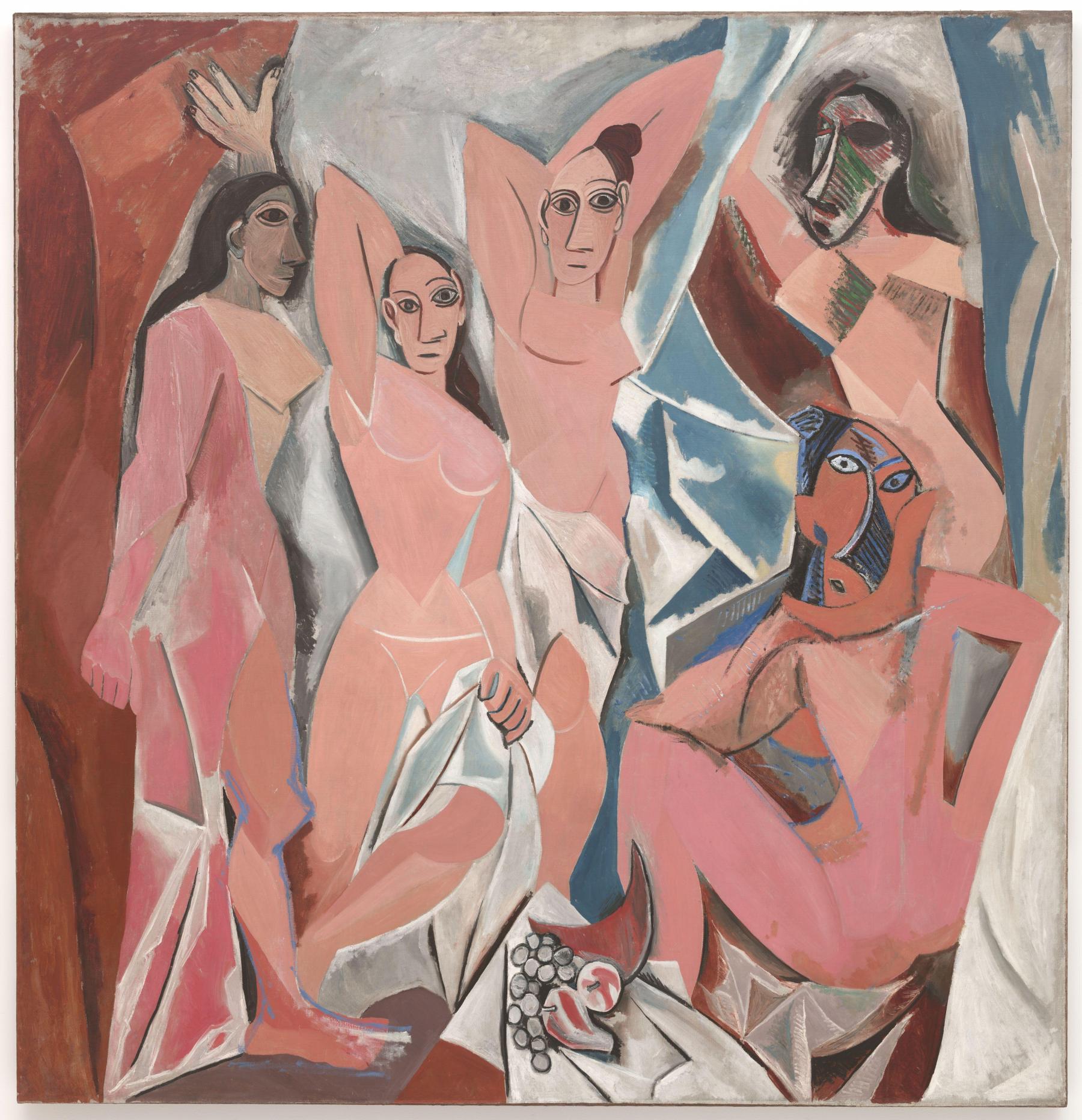 Les Demoiselles d’ Avignon, started when Picasso was only twenty-five, began
a remarkable phase in his work. Artistic innovations do not come about in a
vacuum : Picasso drew on the influence of African sculpture and the work of
Cezanne and Matisse in this painting, and it
is therefore a meeting place for the traditions of primitive and contemporary
art, disrupting both to create something new and disturbing. The harsh
angularity and distortion of the almost naked figures, heralding the movement
known as Cubism, are as disconcerting and alarming now as they were for
Picasso’s astonished fellow artists.
Les Demoiselles d’ Avignon, started when Picasso was only twenty-five, began
a remarkable phase in his work. Artistic innovations do not come about in a
vacuum : Picasso drew on the influence of African sculpture and the work of
Cezanne and Matisse in this painting, and it
is therefore a meeting place for the traditions of primitive and contemporary
art, disrupting both to create something new and disturbing. The harsh
angularity and distortion of the almost naked figures, heralding the movement
known as Cubism, are as disconcerting and alarming now as they were for
Picasso’s astonished fellow artists.
The title of the painting comes from a street in the red-light district of Barcelona, and the five statuesque females are presumably prostitutes, their gestures aping those of sexual invitation. Two women in the centre face towards us but their noses are painted in profile; two others wear frightening masks, one of them shown both full face and in profile although the woman has her back to us. As became typical of Cubist paintings, the colours are flat and unemphatic, limited to flesh tones and a muted background, with the result that the firm, deliberate outlines dominate the painting. The five women are simultaneously passive objects and aggressive predators, and the painting has a mood of restlessness and violence, and a strange primitive energy. Its influence has been vast, and it has become one of the most famous works of art of this century.
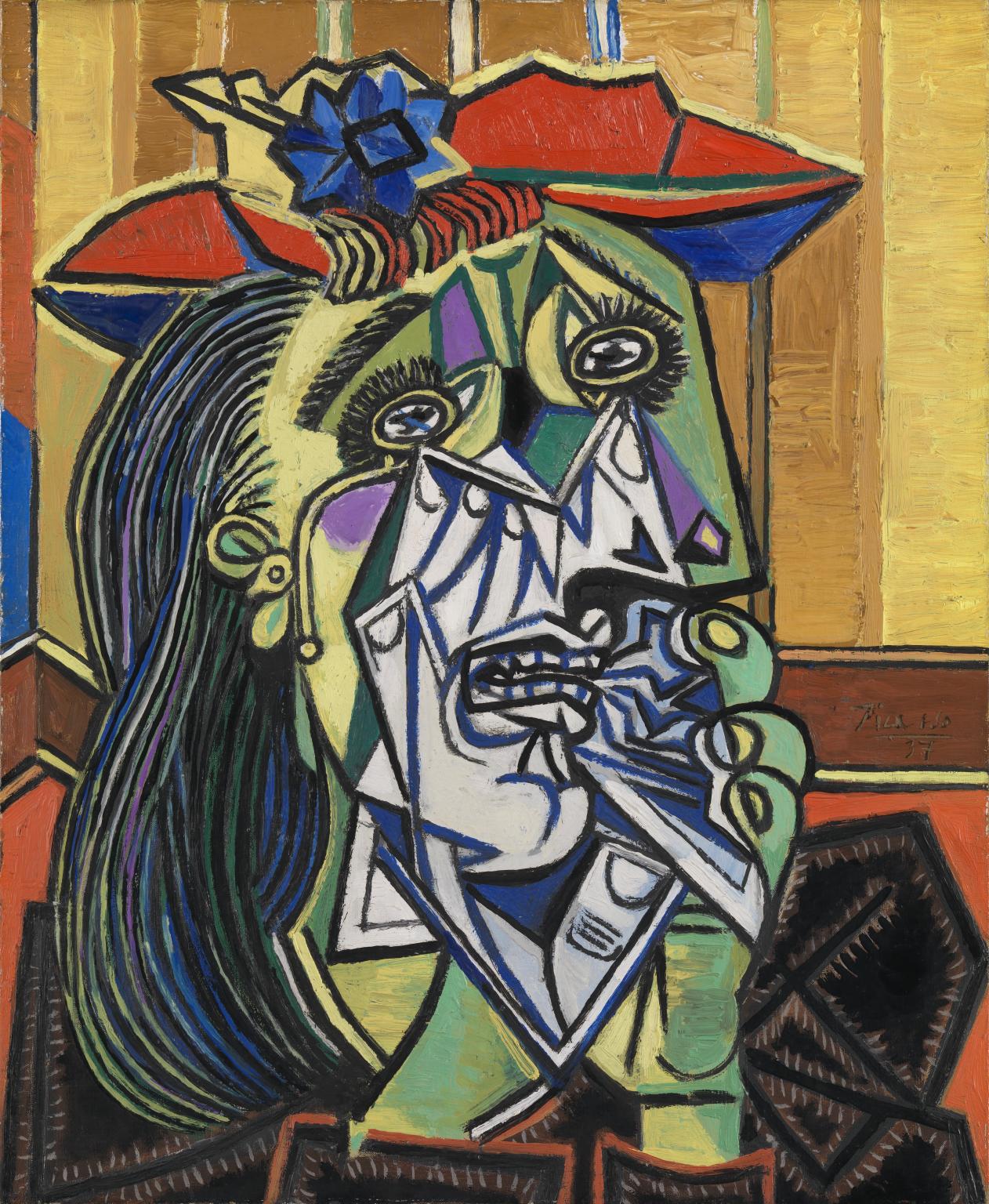 The model for this intensely moving picture was surrealist photographer Dora
Maar (Theodora Markevich), Picasso’s mistress and muse for seven years before a
stormy separation that left her broken and reclusive. Like other left-wing
sympathizers in 1937, the couple’s eyes were on the civil war in Spain. Maar
photographed Picasso’s creation of Guernica — the anti-war icon —
which was painted in a studio she hired in due des Grands-Augustins.
The model for this intensely moving picture was surrealist photographer Dora
Maar (Theodora Markevich), Picasso’s mistress and muse for seven years before a
stormy separation that left her broken and reclusive. Like other left-wing
sympathizers in 1937, the couple’s eyes were on the civil war in Spain. Maar
photographed Picasso’s creation of Guernica — the anti-war icon —
which was painted in a studio she hired in due des Grands-Augustins.
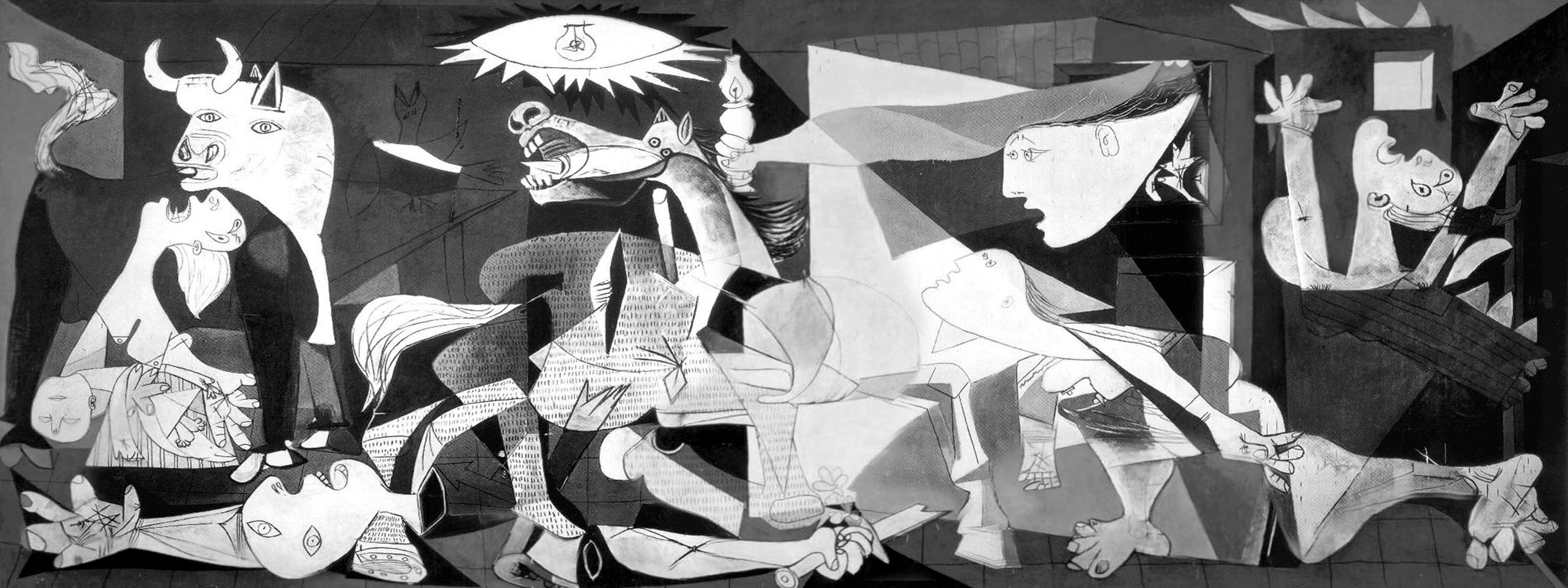 At the start of 1937, Picasso received, via Josep Renau, a commission from the
legitimate government of the Republic to create a large-scale work for the
Spanish Pavilion at the International Exposition at Paris, to be held that
summer. Initially, the artist toyed with the idea of making an allegory of
painting represented by painter and model. On 26th April 1937, however, the
devastating bombing of the Basque town of Gernika by Nazi Germany and Fascist
Italy inspired Picasso to paint Guernica. In little under six weeks, he
produced close to fifty drawings, sketches and preliminary works and different
corrections of his large picture. The genesis of the work was photographed by
Picasso’s then partner, Dora Maar, constituting one of the most well-documented
examples of an artwork’s process of creation in art history. The outcome is a
complex painting, unintelligible at first glance, at once interior and
exterior, late-Cubist and Surrealist, but also interwoven in Western pictorial
tradition. Its pyramidal structure os commonplace in history painting and it
borrows from and includes influences from past masters such as
Rubens, Delacroix, David and
Goya.
At the start of 1937, Picasso received, via Josep Renau, a commission from the
legitimate government of the Republic to create a large-scale work for the
Spanish Pavilion at the International Exposition at Paris, to be held that
summer. Initially, the artist toyed with the idea of making an allegory of
painting represented by painter and model. On 26th April 1937, however, the
devastating bombing of the Basque town of Gernika by Nazi Germany and Fascist
Italy inspired Picasso to paint Guernica. In little under six weeks, he
produced close to fifty drawings, sketches and preliminary works and different
corrections of his large picture. The genesis of the work was photographed by
Picasso’s then partner, Dora Maar, constituting one of the most well-documented
examples of an artwork’s process of creation in art history. The outcome is a
complex painting, unintelligible at first glance, at once interior and
exterior, late-Cubist and Surrealist, but also interwoven in Western pictorial
tradition. Its pyramidal structure os commonplace in history painting and it
borrows from and includes influences from past masters such as
Rubens, Delacroix, David and
Goya.
The upsetting and startling scene depicts grieving women, fire, a fallen soldier, a bull and a horse, and all the symbols of the terror and death of the war. A hidden symbol is formed as the horse’s nostrils and upper teeth can be seen as a human scull facing left and slightly downward. Another hidden image is of a bull that appears to gore the horse from underneath. The head of the bull is formed mainly by the horse’s front leg which has the knee on the ground. The leg’s knee cap forms the head’s nose, and a horn appears within the horse’s breast.

